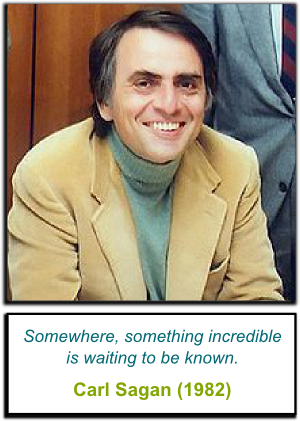
Ever since I read about Hawking’s model-dependent realism, I’ve been searching for a rigorous criterion to identify good theories. Without any convincing answer… But a few months ago, I had the chance to attend a brilliantly enlightening talk by cosmologist Matthew Colless in the BtSM2013 colloquium. His answer was an amazing eye-opener: Beauty.
Beauty is essential in the whole of science. Typically, it’s what drives me in my research in mathematics, as well as in my effort of math popularization:
Despite its apparent naivety, I believe the topic of this article to be the most important aspect of science. I also think that it’s highly misunderstood even by most scientists. And it has dramatic consequences on the way science should be communicated and taught.
Beauty Drives the Quest for Truth
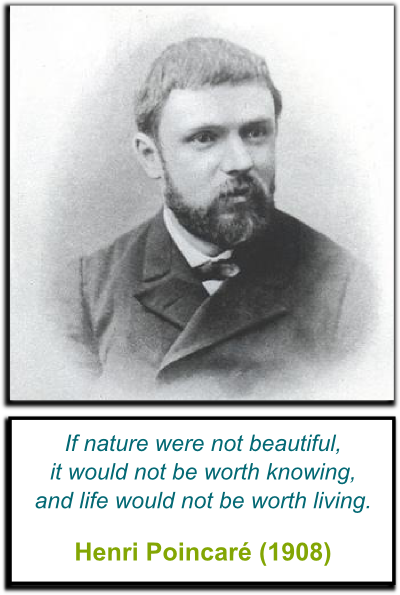
Granted, all scientists may not be as good orators as the Nobel laureates in the video above. Yet, believe me, all the ones I know are absolutely passionated by what they do. And if you truly get interested in their work, they become unstoppable. Twinkles suddenly brighten their eyes! This is because they are fascinated by the beauty of the science they’re doing!
Let’s start this article by celebrating this essential connection between beauty and science! Starting with this video by NobelPrize.org on the beauty of chemistry:
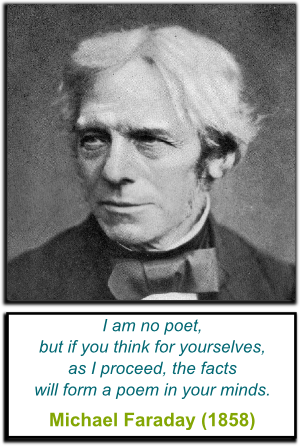
Au contraire! When you have been studying different aspects of a phenomenon, it’s even more amazing to see how your theoretical understandings of the phenomenon actually appear in practice. You then get to enjoy not only the superficial aspect of the phenomenon, but its fundamental properties as well. This has been the case for me, for instance, as I was staring speechlessly in front of François Morellet’s artwork. But who better to express this idea than the charismatic Nobel prize winner Richard Feynman?
And I can’t resist showing you the mesmerizing interviews of the physicists on Sixty Symbols…
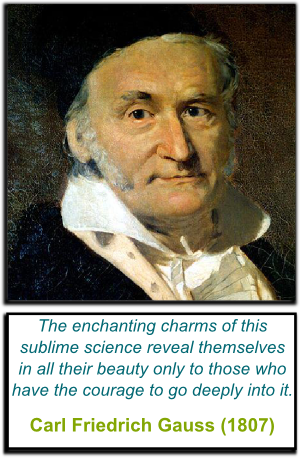
I partly mean that. But there’s more. The very act of doing science is considered by all scientists as a beautiful quest in itself. In particular, not much matches the beauty of a spectacular achievement in this quest. And what better illustration to that is there, than the interview Andrew Wiles talking about the moment he figured out the proof of Fermat’s last theorem?
That’s not all! In fact, there’s something else much more important and counter-intuitive to understand… Most scientists aren’t aware of it, but Matthew Colless claims it to be quite true. And I totally agree with him.
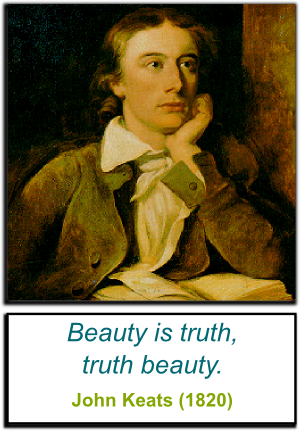
It’s the fact that beauty shapes our conceptions of the truth; or, at least, it strongly influences our approach to its quest. Even and especially in science.
I’m afraid things aren’t that simple! In Ancient Greece, when Plato discovered that there were only 5 regular solids, he found these so beautiful that he went on postulating that the universe was made of them! He even matched each of these solids with one of the 4 classical elements (earth, air, water, fire), and added ether for the 5th solid! The mere beauty of these abstract objects led him to consider them as the underlying truth of the Universe!
You have to admit that the idea of God is a beautiful one. Just like the idea that we are all connected and that we will end up altogether eventually in a better place. Also, I’m told that the Bible and the Quran are literary wonders. Note that I have no intention to claim that they are wrong. I just want to highlight that the reason why religious people believe what they believe is, at its core, a matter of beauty.
This is because the criteria of beauty in science aren’t the same! Many scientists find the idea of the absence of God beautiful. One one hand, it means that there are fundamental unchanging laws of physics to be discovered. On the other other hand, it implies that we are in charge of our world! Aren’t these ideas beautiful?
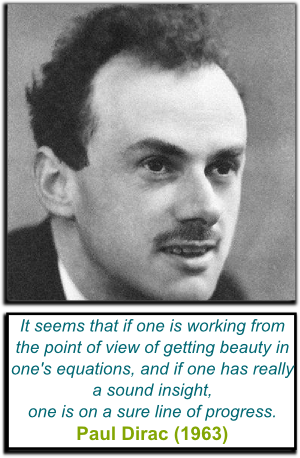
Let’s talk about theoretical physics then! In the following TedTalk, Nobel prize winner Murray Gell-Mann uses a very similar approach to Plato’s to describe the elaboration of his theory on the weak force, which is essentially based on a mathematical marvel:
The key idea is that beauty is a (subconscious) biased judgement. And what matters is not how you or I perceive beauty, but how each and every one does.
- Theoretical physicists and mathematicians find beauty in rigor, consistency, structures, concepts, proofs…
- Experimental physicists might find beauty in testability, agreement with observation, universality…
- Religious people might find beauty in universality, morality, purpose, God…
In all cases, my claim is that beauty is what shapes our conceptions and our quests of the truth. Even and especially in theoretical physics!
Not without irony, I’d say Matthew Colless’ answer was so beautiful, it had to be right!
He claimed that beauty has been undergoing a Darwinian evolution. That’s why the criteria of beauty we are now left with are so efficient!
The Darwinian Evolution of Beauty
Let me recall the basic ideas of Darwin’s theory. While there is a natural diversification of life (by chance or by crossings), species then have to struggle to reproduce themselves. Most won’t be fit enough to do so and will thus die. This is known as the natural selection. Eventually, all species left will have been the fit ones. This idea is called the survival of the fittest. And, as Darwin himself underlined it in the concluding sentence of his masterpiece, this theory is extremely beautiful.
You can think of the criteria of beauty as species, and their efficiency to produce powerful theories as their fitness.
There is a natural diversification of the criteria of beauty. Most won’t produce theories which will be efficient. Having no follow-up, these theories will eventually die, along with the criteria of beauty that produced them. The best theories, which will be able to produce military, economical or cultural growth, will then dominate others. Their success will then strengthen and spread the corresponding criteria of beauty.
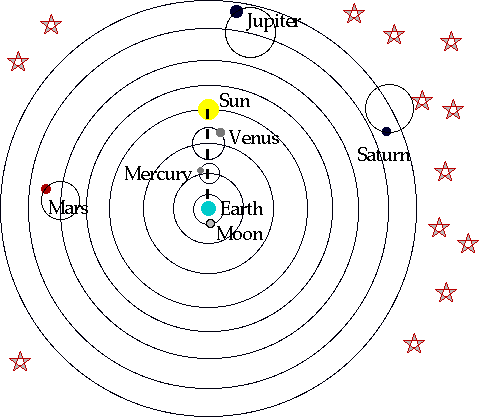
Let me give you the example of cosmology. The first impressive achievement in cosmology was the Ptolemaic model. Ptolemy managed to explain the motions of the cosmos by a model of circles rolling on Earth-centered circles.
Well, that’s not obvious. In fact, given the measurements which could be done back then, this model is so close to observations that there was no way of questioning it! In particular, Nicolaus Copernicus didn’t refute the Ptolemaic system because of its inaccuracy. The only reason why he decided to propose an alternative representation of the universe is because he found it unpleasing aesthetically, as explained by Marcus du Sautoy in this extract from The Beauty of Diagrams on BBC:
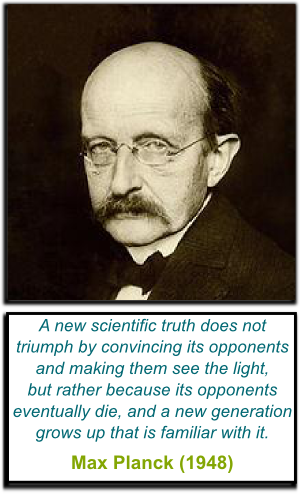
But, as opposed to Copernicus, most scholars didn’t consider simplicity as a major criterion of beauty at that time! In fact, the mere idea that Earth was not the center of the universe was such a heresy that these scholars could not find beauty in a heliocentric model.
As Max Planck would argue, it’s nearly impossible to radically change the minds of the established scientists. But the Copernican system became so much easier for computations and predictions of planet locations that its successors used it rather than the Ptolemaic system. In Darwinian words, the Copernican model was fitter. Thus, the Ptolemaic system, along with geocentrism, eventually disappeared, while simplicity triumphed.
Ironically, once again, beauty is not as simple as simplicity! The Copernican model was actually far from being as simple as we present it.
For one thing, the trajectories of the planets didn’t seem to be centered around the Sun! Worse, the circular orbits didn’t seem to match observations!
That’s where Kepler entered in play, with a daring hypothesis, which was considered disgusting by all!
For 2,000 years all attempts at understanding the cosmos all used circles. That’s because circles represent the most beautiful mathematical object. Circles play a central role in aesthetics in all visual arts. They are the symbol of harmony, unity and wholeness. Not using circles to describe the harmony and grandeur of the cosmos seemed to be just as huge a heresy as choosing a heliocentric system.
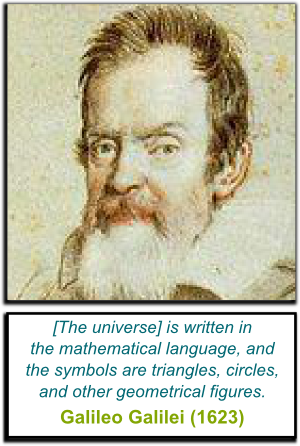
Yes! And he didn’t like that! In fact, he first made a large number of attempts to fix the circles. Alas, he replaced circles by ellipses. And even though the ellipses suddenly perfectly match observations, he still repeated his calculations over and over and over, just to check if the sacrifice of circles was well worth it. This is what’s explained by Michael Mosley in The Story of Science: What is out there? on BBC:
Now, as explained by Michael Mosley, Kepler’s ideas weren’t well received at first. They were too ugly. After all, it did take Kepler five years of tedious work to finally convince himself of the beauty of its model. And this beauty didn’t really lie in its simplicity. It lied in its agreement with observations!
That’s not what Murray Gell-Mann said! Similarly, at that time, the truth of the Church was more beautiful than the theories of some astronomers. This truth was the dominating one, even when the astronomers’ theories matched observations. In fact, if it weren’t for the next major breakthrough in science, I doubt we would be celebrating these astronomers so much nowadays.
I’m talking about Isaac Newton’s Principia Mathematica. As opposed to any of his predecessors’ works, this masterpiece was an immediate success, as it was beautiful according to all common criteria and even more! This is illustrated in this extract from another of NOVA’s awesome science documentaries.
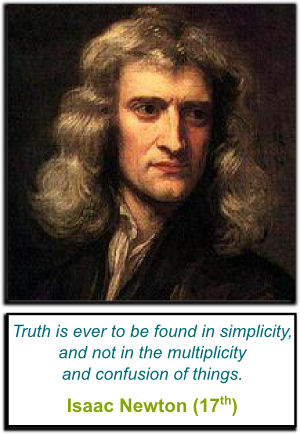
There’s more than that to the beauty of Newton’s theory. Most importantly, it is a universal theory. Something that is applied everywhere, at all scales. It’s not merely about the motions of planets, it’s also about the interactions between any two objects, even on Earth. This universality is probably the criterion which distinguishes Newton’s theory from most of other theories!
But that’s not all. Since Euclid’s elements, it’s also the first theory to be clearly axiomatized. This constructive approach makes the theory clear. It enables to avoid ambiguities as much as possible. And I should add that Newton’s theory is highly predictive. This might not have been obvious at Newton’s time, but, today, his theory gets applied every time some engineer wants to build a plane, a bridge or a rocket. The applications to engineering are now uncountable!
Now, here’s the most important point regarding the evolution of beauty: None of Newton’s work would have been possible, if it weren’t for Copernicus’ search for simplicity, nor for Kepler’s search for accuracy. Newton had to appreciate his predecessors’ criteria of beauty to be willing to build on their work. And successors of Newton were about to adopt the same criteria of beauty. This is how the fitness of simplicity and accuracy has triumphed over geocentrism and circles!
No! In fact, it’s essential to note that beauty can be blinding. Just like geocentrism has been misleading the greatest minds for centuries, mathematical elegancy might have been misleading in today’s science, as, for instance, it seems to be the case for supersymmetry in theoretical physics! Still, it’s interesting to note that the criteria of beauty we are left with have survived a sort of natural selection which make them relevant, even though they may not be unveiling the truth!
Some Criteria of Beauty
It’s interesting to study each criterion of beauty individually and to see its evolution through time along with the theories it produced. The example of cosmology has already enabled us to discuss simplicity, accuracy, geocentrism, circles, universality, axiomatization, predictions and usefulness.
In theory, I guess they could. However, in practice, science is the business of scientists. For a theory to be published in journals, to be described in conferences and to appear in textbooks, it needs to be peer-reviewed and accepted by the scientific community. So, to understand how science shapes its truth, it’s unavoidable to wonder how scientists judge whether a theory is good or bad. Now, it’s interesting to note that there is a great multitude of criteria, but that the humans we are tend to reduce them all into the mere concept of good or bad. Worse, this reduction often occurs subconsciously. Too often do we “know” we disagree without knowing why. This reduction is precisely where lies the unavoidable subjectivity of science.
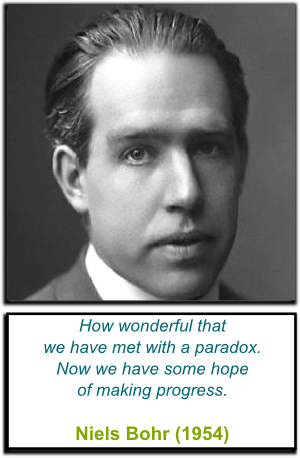
One criterion I particularly find interesting is rigor. Its role and importance has been going up and down, as you can read it in my post on rigor and intuition. But that’s not the most important one!
It’s a criterion that dominates the world of science and mathematics, but is nearly inexistent elsewhere! I’m talking about the beauty of surprising and counter-intuitive results. Scientists love these!
Yes! But that’s not surprising if you consider the Darwinian evolution of beauty! Indeed, counter-intuitive theorems enable us to correct our intuitions, hence giving us better chance to understand and solve harder problems. Thus, the appeal of counter-intuitive results is a fit criterion of beauty, which explains why it is so spread among scientists!
There are countless such examples! You can find some in my talk on large numbers or fractals, or my articles on self-reference, infinite series, conditional probabilities, quantum mechanics, special and general relativity or on the physics of water in trees. Veritasium also has a bunch of amazingly counter-intuitive videos on weightlessness, tree mass, slinky drop, temperature, shadow illusion, or his latest one on bullet block!
In fact, I consider this interest for counter-intuitive results as one of the most important criterion of beauty, along with simplicity and accuracy. I’d even say that you can’t be good in math or science if you can’t enjoy being shown that your intuition is wrong! This is, I think, the main difference between scientists and others.
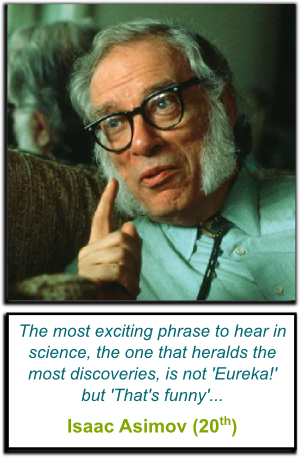
Yes! For instance, a few years ago, the CERN did an experiment according to which neutrinos were going faster than the speed of light. This was a highly counter-intuitive results in physics, as Einstein’s well-established general relativity claims that nothing can go faster than light. These results will eventually turn out to be discredited, but if they weren’t, physicists wouldn’t have been depressed. On the opposite, they’d have been thrilled! Just listen to theoretical physicist Tony Padilla on Sixty Symbols:
This interest for surprising results is obviously related to curiosity, appeal for mysteries and hope of discovery. These are all essential criteria of beauty which you must possess to ever become a scientist.
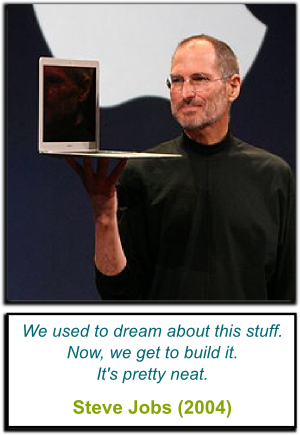
One important criterion of beauty in science I should come back to is usefulness. Now, I’m rather a theoretical scientists than an applied one, but, even as a theorist, it blows my mind away to think about the huge amount of innovations that science has kept introducing to our standards of living in these last centuries. These applications are so numerous that I have no idea where to start! Just look around you, and imagine yourself living a couple centuries earlier!
Just like usefulness, testability is an essential criterion of beauty, even though, once again, as a theorist, I’m not as appealed by it as experimental scientists would be! In fact, as opposed to other criteria of beauty we have discussed so far, testability isn’t unanimous in the scientific community.
Yes! For instance, Peter Higgs postulated a boson, Alan Guth described an inflationary theory and Leonard Susskind proposed string theory. None of these theories were, at their time, testable. And, while the Higgs boson eventually became a testable (and tested!) theory, all others remain untestable. Today, a theory of non-interacting multiverse, as suggested by many now, will, for sure, be forever untestable.
I find it absurd to state such a thing! As we have discussed here, science has advanced by making scientists fall in love with this field. These untestable theories have the amazing capacity to capture one’s imagination. Many, included myself, still find them beautiful, including because they are simple, mathematically elegant (or so I’m told), universal and counter-intuitive. Now, they might not be useful now, but the History of mathematics clearly shows that apparently useless mathematical objects often eventually turn out to be useful. This argument is, by the way, the reason why I’m not obsessed by usefulness…
Yes! Multidisciplinarity seems an increasingly important criterion of beauty to me. I am convinced that a huge amount of innovation will come from interfacing different fields of science. This is partly why I consider popular science essential! I think all scientists (as well as non-scientists!) should know a little bit of the landscapes of mathematics, just like I learn a bit of physics, biology or sociology. But you can’t ask them to read through mathematical journals. That’s why I’m doing what I do on Science4All, and that’s why I invite you to join me in this enterprise! Without forgetting to make it simple, make it cool!
Let’s Sum Up
I hope I have convinced you of the importance of beauty in science, as it has a dramatic consequence!
Since beauty is essential to science, teaching what beauty is has to be regarded as at least as important as teaching science itself. This is another reason why I consider popular science essential to the future of science. People won’t be engaging with science if they don’t see this beauty. And the strict environment of the classrooms may not be the right (and for sure it’s not the only) place to display the beauty of science.
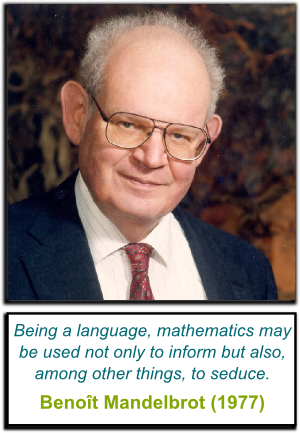
This is why we need to find all possible ways to get people introduced to what makes science awesome, whether we want to highlight its simplicity, accuracy, universality, axiomatization, counter-intuitive results, usefulness or testability! So, come on and help me show how cool science is, and contribute by writing your Science4All article!
Or, at least, spread the beautiful words of science popularizers, like these of the mesmerizing Neil deGrasse Tyson:
Let me end this article with a last tricky but absolutely fascinating criterion of beauty, which is the one Neil deGrasse Tyson is stressing on. It’s the idea that we are absolutely nothing in the great Cosmos, but that, simultaneously, we are hugely privileged.
Science has shown us that we have been much too self-centered in our understanding of the world. We have been considering that each of our societies was the center of the world. That humankind was the center of the universe. And that the Earth was the center of the cosmos. But modern cosmology teaches us that our planet is only a small object gravitating around the Sun. That this Sun is just one of hundreds of billions of stars orbiting our galaxy. And that our galaxy is only one in a gigantic web of hundreds of billions of other galaxies. And I’m not even involving the multiverse theory, according to which we are only in one of an uncountable number of universes. Now, if that doesn’t teach you humility, you can also reflect on the fact that many plants have many more genes than we do, and that what composes our bodies and brains are the exact same molecules that those you find in the ocean. Even in our near nature, we aren’t special…
A few billion years ago, the Universe was created from a Big Bang. Since then, large clouds of gas have collapsed and created stars. As Neil deGrasse Tyson puts it, these stars have been nurturing the atomic elements of our bodies, and have then exploded, spreading these elements throughout the universe. Some of these elements then bombarded the small ordinary planet that Earth is. That’s where chemistry entered in play, and built all the molecules which will then be filling our bodies! These first molecules started to combine with each other to then create the first forms of life. That’s when biology took over and diversified life. This diversification, combined with natural selection, then produced the amazing complexity of life, with features as amazing as the eye and the brain! Eventually, here you were, equipped with organs which are results of literally billions of years of optimization. And you have this unthinkable privilege to think, to reflect, and to savor the amazing universe you’re surrounded by, like no other species can. Doesn’t this make you feel… special?
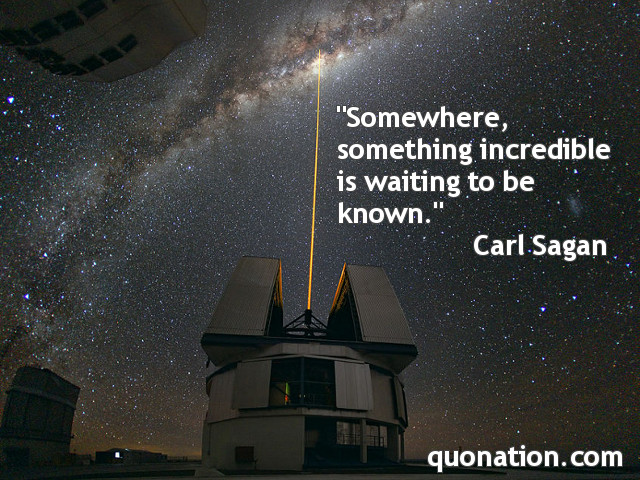
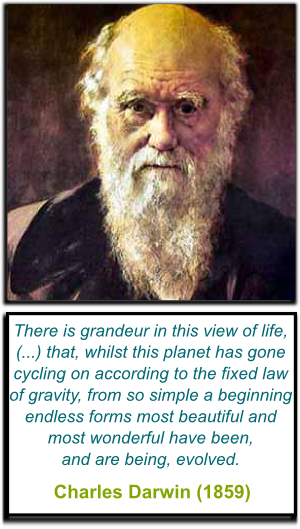
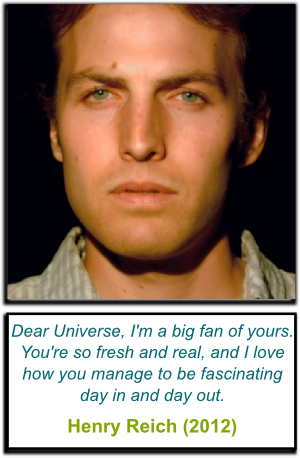
Leave a Reply to Lê Nguyên Hoang Cancel reply